Francis was the son of Pietro Bernadone, a rich cloth merchant. Though he had a good education and became part of his father's business, he also had a somewhat mispent youth. Captured during a conflict between Assisi and Perugia, he spent over a year as a prisoner of war. During this time he had a conversion experience, including a reported message from Christ calling him to leave this worldly life. Upon release, Francis began taking his religion seriously.Francis took the Gospels as the rule of his life, Jesus Christ as his literal example. He dressed in rough clothes, begged for his sustenance, and preached purity and peace. His family disapproved, and his father disinherited him; Francis formally renounced his wealth and inheritance. He visited hospitals, served the sick, preached in the streets, and took all men and women as siblings. He began to attract followers in 1209, and founded the Franciscans based on a simple statment by Jesus: "Leave all and follow me." In 1212, Clare of Assisi became his spiritual student, which led to the founding of the Poor Clares. He visited and preached to the Saracens; composed songs and hymns to God and nature; lived with animals, worked with his hands, cared for lepers, cleaned churches, and sent food to thieves. In 1221 he resigned direction of the Franciscans.
While in meditation on Mount Alvernia in the Apennines in September 1224, Francis received the stigmata, which periodically bled during the remaining two years of his life. This miracle has a separate memorial on 17 September.
Born
1181 at Assisi, Umbria, Italy as Francis Bernardone
Died
4th October 1226 at Portiuncula, Italy of natural causes; relics in Assisi, Italy
Canonized
16th July 1228 by Pope Gregory IX
Patronage
against dying alone; against fire; animal welfare societies; animals; ecology; environment; families; fire
Representation
birds; deer; fish; lamb; skull; stigmata; wolf
Clare came from a wealthy and noble family in Assisi. Her father died young. After hearing St. Francis of Assisi preach in the streets, she confided to him her desire to live for God, the two became close friends. On Palm Sunday 1212, the bishop presented her with a palm, which she apparently took as a sign. She eventually took the veil of religious profession from Francis at the Church of Our Lady of the Angels in Assisi.She founded the Order of Poor Ladies (Poor Clares) at San Damiano, and led it for 40 years. Everywhere the Franciscans established themselves throughout Europe, there also went the Poor Clares, depending solely on alms, forced to have complete faith on God to provide through people; a lack of land-based revenues was a new idea at the time.
Clare loved music and well-composed sermons. She was humble, merciful, charming, optimistic, and chivalrous. She daily meditated on the Passion. When she learned of the Franciscan martyrs in Morrocco in 1221, she tried to go there to give her own life for God, but was restrained. Once when her convent was about to be attacked, she displayed the Sacrament in a monstrace at the convent gates, and prayed before it; the attackers left.
Toward the end of her life, when she was too ill to attend Mass, an image of the service would display on the wall of her cell; thus her patronage of television. She was ever the close friend and spiritual student of Francis, who apparently led her soul into the light.
Born
16th July 1194 at Assisi, Italy
Died
11th August 1253 of natural causes
Canonized
26th September 1255 by Pope Alexander IV
Name Meaning
bright; brilliant
Patronage
embroiderers; eye disease; eyes; gilders; goldsmiths; gold workers; good weather; laundry workers; needle workers; Santa Clara Indian Pueblo; telegraphs; telephones; television; television writers
Representation
host; monstrance; woman with a monstrance in her hand
Our News
First Communion and Confirmation
基督小先鋒獎勵計劃頒獎
First Communion and Confirmation at St. Anthony’s Church
Our Religion
Francis was the son of Pietro Bernadone, a rich cloth merchant. Though he had a good education and became part of his father's business, he also had a somewhat mispent youth. Captured during a conflict between Assisi and Perugia, he spent over a year as a prisoner of war. During this time he had a conversion experience, including a reported message from Christ calling him to leave this worldly life. Upon release, Francis began taking his religion seriously.Francis took the Gospels as the rule of his life, Jesus Christ as his literal example. He dressed in rough clothes, begged for his sustenance, and preached purity and peace. His family disapproved, and his father disinherited him; Francis formally renounced his wealth and inheritance. He visited hospitals, served the sick, preached in the streets, and took all men and women as siblings. He began to attract followers in 1209, and founded the Franciscans based on a simple statment by Jesus: "Leave all and follow me." In 1212, Clare of Assisi became his spiritual student, which led to the founding of the Poor Clares. He visited and preached to the Saracens; composed songs and hymns to God and nature; lived with animals, worked with his hands, cared for lepers, cleaned churches, and sent food to thieves. In 1221 he resigned direction of the Franciscans.
While in meditation on Mount Alvernia in the Apennines in September 1224, Francis received the stigmata, which periodically bled during the remaining two years of his life. This miracle has a separate memorial on 17 September.
1181 at Assisi, Umbria, Italy as Francis Bernardone
4th October 1226 at Portiuncula, Italy of natural causes; relics in Assisi, Italy
16th July 1228 by Pope Gregory IX
against dying alone; against fire; animal welfare societies; animals; ecology; environment; families; fire
birds; deer; fish; lamb; skull; stigmata; wolf
Clare came from a wealthy and noble family in Assisi. Her father died young. After hearing St. Francis of Assisi preach in the streets, she confided to him her desire to live for God, the two became close friends. On Palm Sunday 1212, the bishop presented her with a palm, which she apparently took as a sign. She eventually took the veil of religious profession from Francis at the Church of Our Lady of the Angels in Assisi.She founded the Order of Poor Ladies (Poor Clares) at San Damiano, and led it for 40 years. Everywhere the Franciscans established themselves throughout Europe, there also went the Poor Clares, depending solely on alms, forced to have complete faith on God to provide through people; a lack of land-based revenues was a new idea at the time.
Clare loved music and well-composed sermons. She was humble, merciful, charming, optimistic, and chivalrous. She daily meditated on the Passion. When she learned of the Franciscan martyrs in Morrocco in 1221, she tried to go there to give her own life for God, but was restrained. Once when her convent was about to be attacked, she displayed the Sacrament in a monstrace at the convent gates, and prayed before it; the attackers left.
Toward the end of her life, when she was too ill to attend Mass, an image of the service would display on the wall of her cell; thus her patronage of television. She was ever the close friend and spiritual student of Francis, who apparently led her soul into the light.
16th July 1194 at Assisi, Italy
11th August 1253 of natural causes
26th September 1255 by Pope Alexander IV
bright; brilliant
embroiderers; eye disease; eyes; gilders; goldsmiths; gold workers; good weather; laundry workers; needle workers; Santa Clara Indian Pueblo; telegraphs; telephones; television; television writers
host; monstrance; woman with a monstrance in her hand
Our News
First Communion and Confirmation
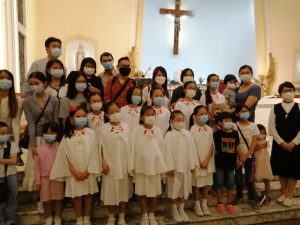
基督小先鋒獎勵計劃頒獎



First Communion and Confirmation at St. Anthony’s Church
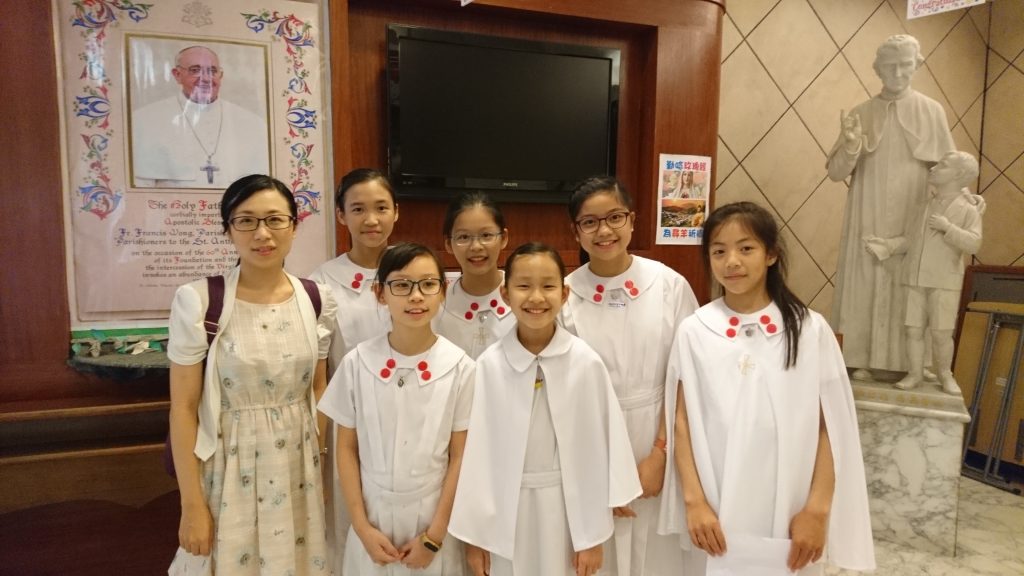
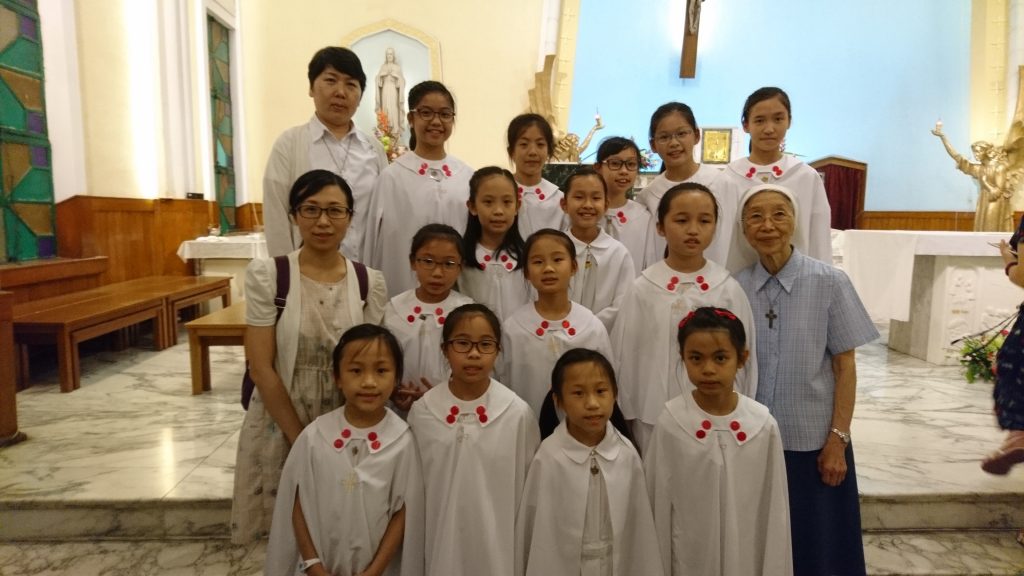
The First Communion
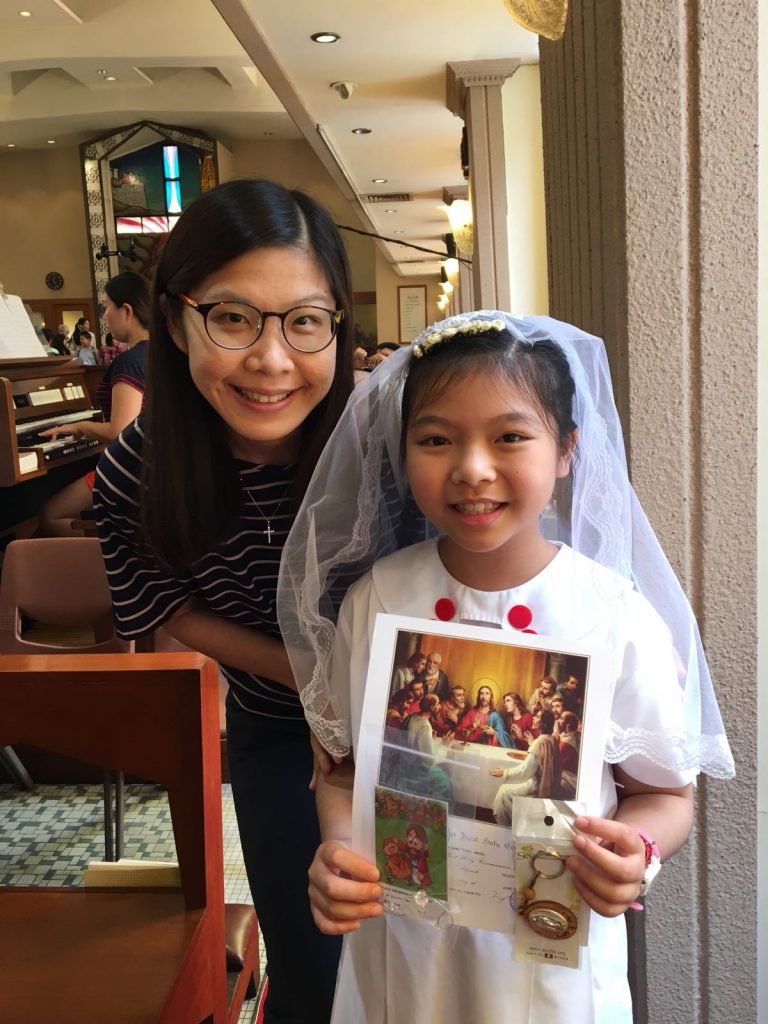
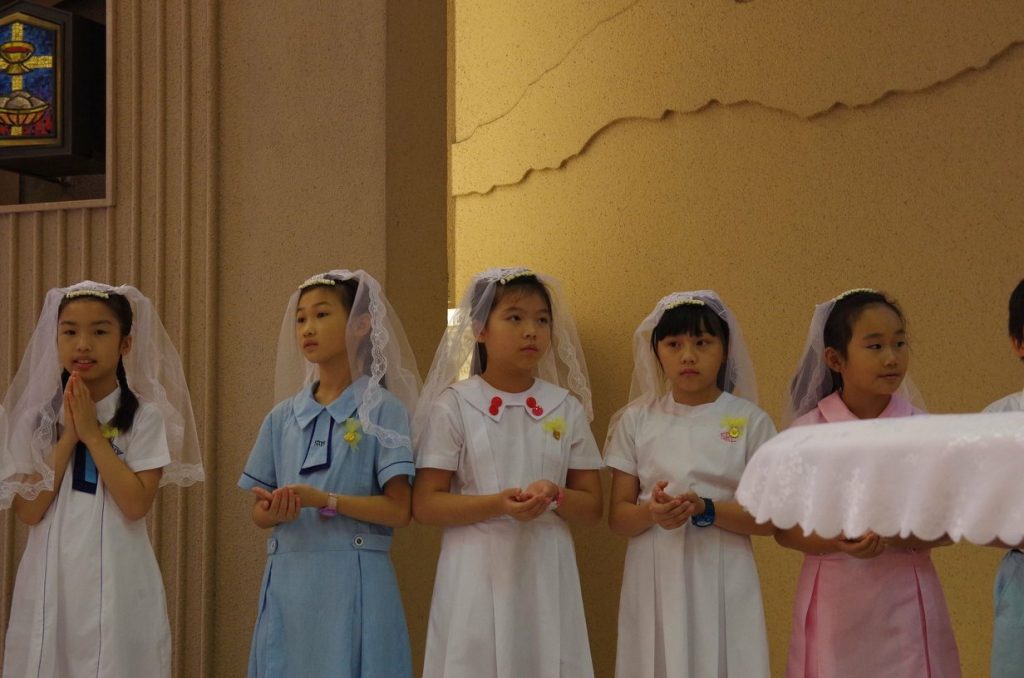
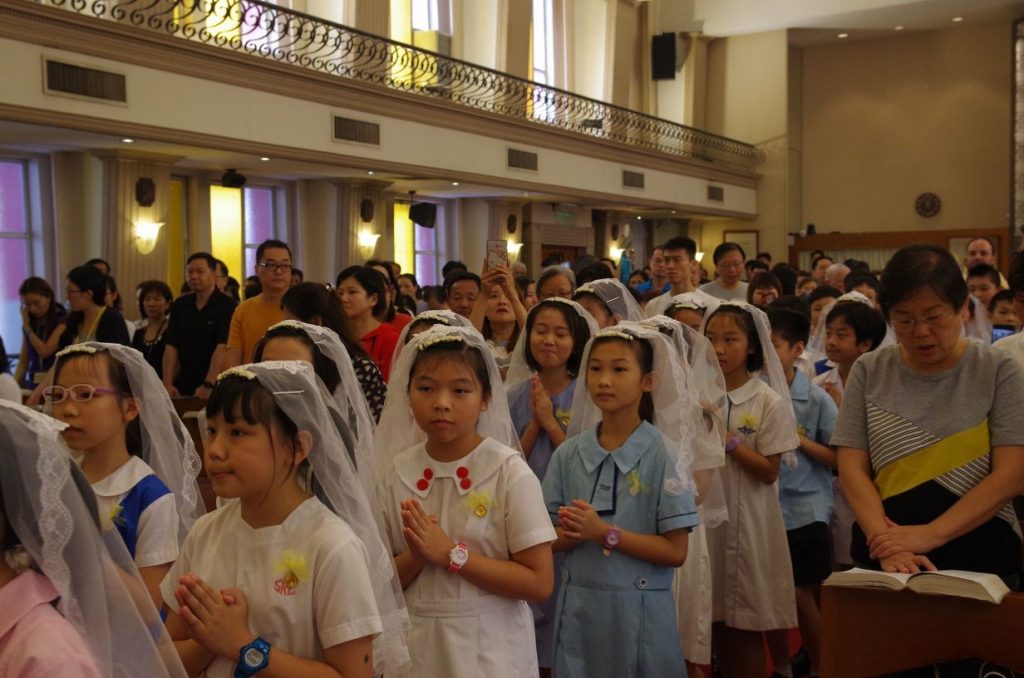
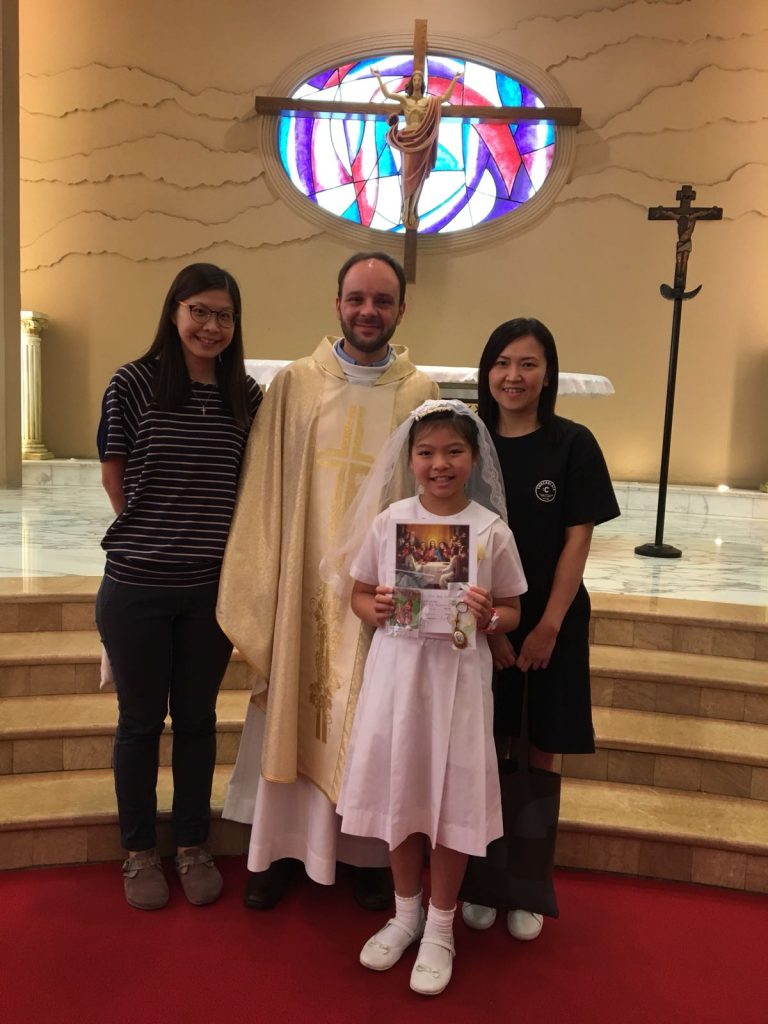
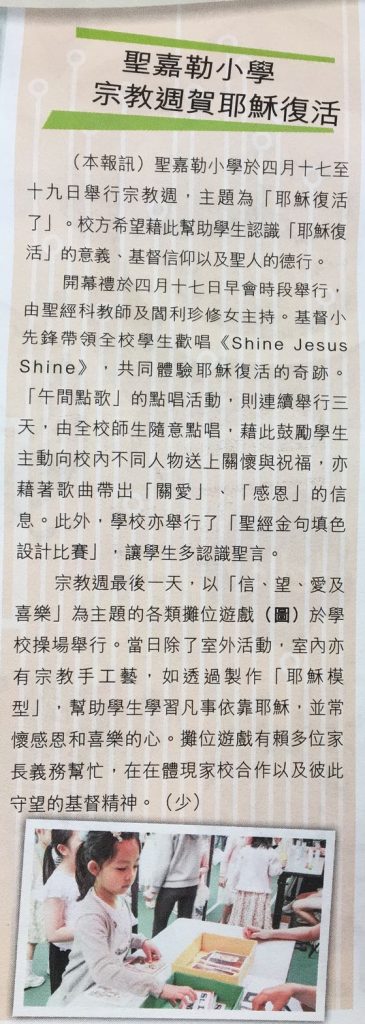
Sister Sharing


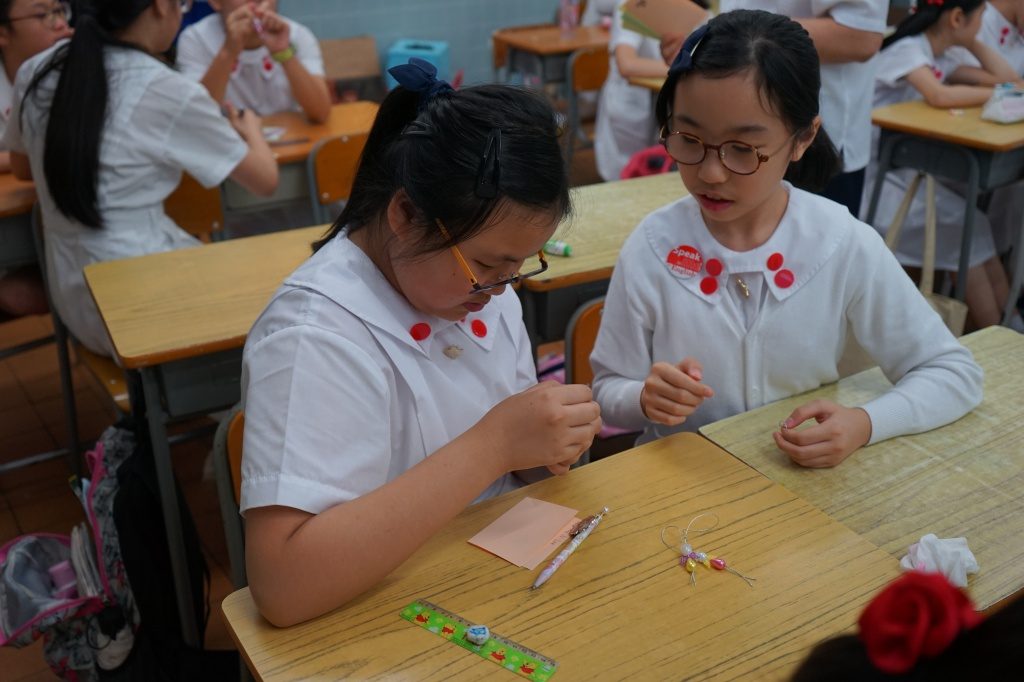
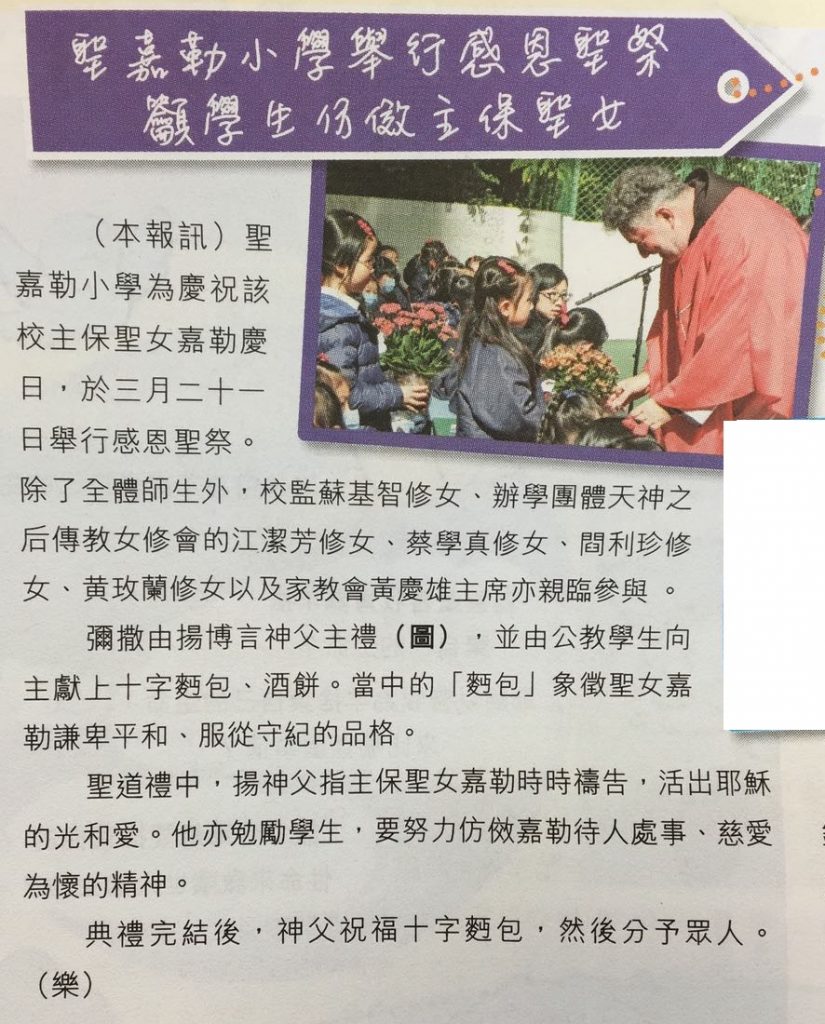
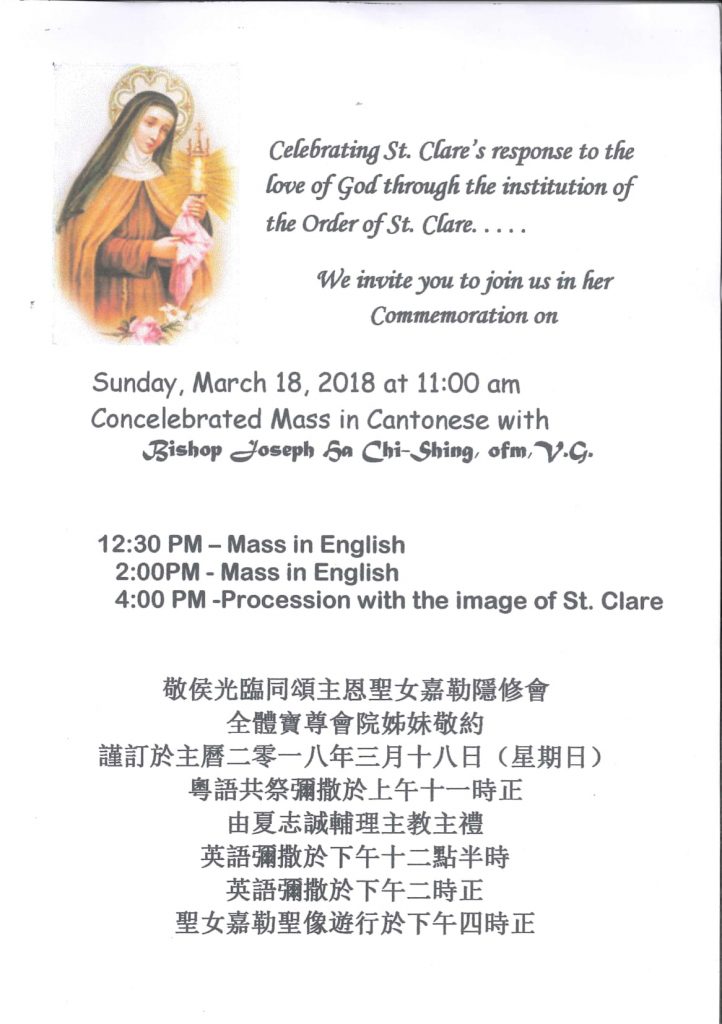

Publications